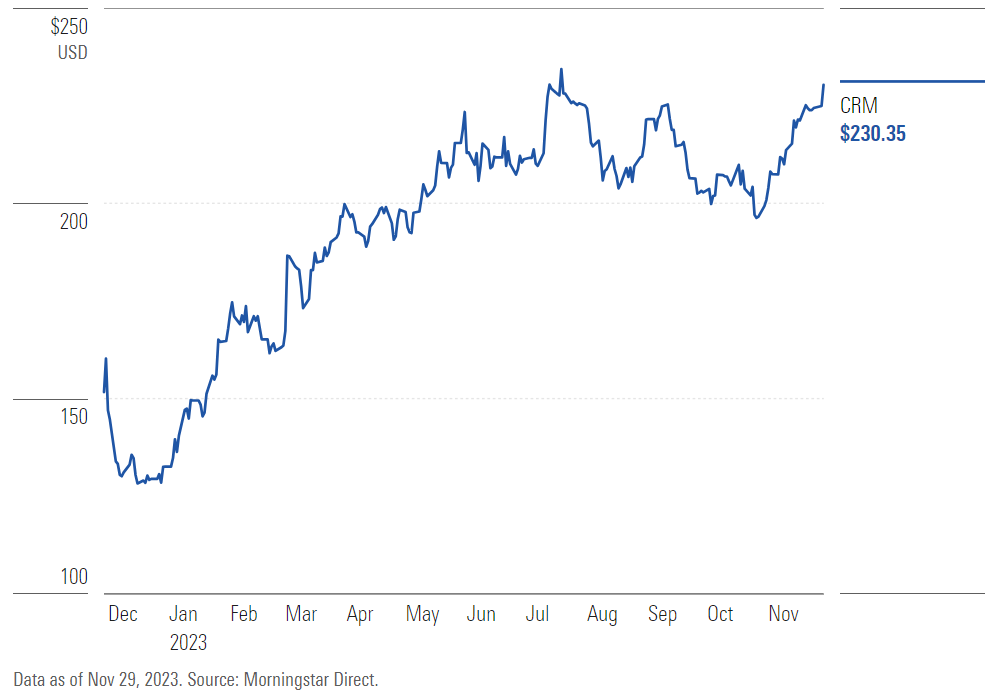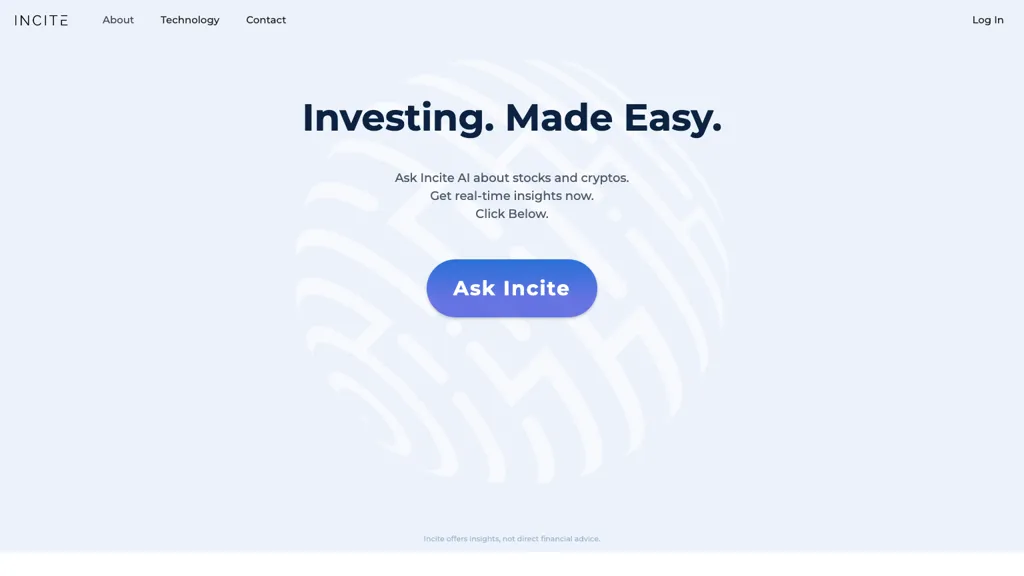Assessing the cost and pricing of AI analysis and stock prediction platforms is vital to ensure you are getting the most value from your investment and avoid hidden charges or unexpected expenses. Pricing structures differ widely, and it is crucial to understand what you're getting for the amount you pay. Here are the top 10 ways to assess the price and expenses of these platforms.
1. Know Pricing Model
Subscription-based: Find out whether the platform has either a monthly or an annual fee and what features are included in each tier.
Pay-per-use: Determine whether the amount you pay for is based on the usage of the platform (e.g. number of transactions or requests for data).
Freemium Model: Check whether the platform offers a free version which offers only a few options. Premium features are charged for.
2. Compare Pricing Tiers
Features breakdown: Check out the features included in each price the tier (e.g. basic, professional, or enterprise).
Scalability: Ensure that the pricing tiers are in line with your requirements, whether you're an individual trader, professional, or an institutional member.
Upgrade flexibility: Check whether you are able to change or upgrade your plan if your needs evolve.
3. Evaluate Hidden Costs
Data fees. Check if the platform charges a fee for accessing premium data.
Brokerage charges: Determine if the platform charges additional charges for trade execution or integration with brokers.
API use. Assess if extra charges result from API access or frequent API usage.
4. Demos, Free Trials and Test Drives
Trial period: Select platforms that allow you to try out the functions of their platform before making an investment.
Limitations of the trial: Make sure that it is inclusive of all features or if it has limitations regarding capabilities.
No-commitment options: Ensure you are able to end the trial without being charged in the event that the service doesn't meet your requirements.
5. Look for promotions and discounts. offers
Discounts for annual subscriptions: Find out whether your platform provides discounts on subscriptions that are paid annually, compared to plans that are billed monthly.
Referral programs - Find out if there are any discounts or credits that you can use to refer new users.
Ask about bulk or institutional pricing if your organization is a large one.
6. How do you assess return on investment (ROI).
Cost vs. Value: Determine whether the features and predictions of the platform justify its cost. Does it, for example aid you in making a better decisions in trading or help you save time.
Record of performance: Check the platform's performance rate or user reviews to assess the potential return on investment.
Costs of alternative: Compare the platform's cost with the cost of not using the platform (e.g. missed opportunities, time spent manually analyzing).
Check out the cancellation policy and Refund Policy
You should be able to cancel your subscription at any time, without paying any fees or penalties.
Refund policy Check if the platform will refund you for unused portions.
Auto-renewal. Find out if the platform will automatically renew your subscription. If so then you'll have to figure out how to stop it.
8. Transparency of Pricing:
Clear pricing page: Make sure that the platform offers a clear and detailed pricing page that does not include any fees hidden.
Customer Support For clarification of unclear pricing details and additional charges, call customer support.
Terms of the contract: Make sure you know the terms of service and any penalties.
9. Check out your competition
Compare the features and costs of different platforms to get most competitive price.
Feedback from users: See what other users think about the platform to determine if it is worth the cost.
Market positioning: Find out the positioning of your platform as a mid-tier, budget or premium alternative. Also, make sure its price matches with your expectations.
10. Think about the long-term costs
Price increases: Find out whether there is a consistent pattern of price rises and how often they occur.
Additions to features - Check if new features come with your current plan or if an upgrade is required.
Costs of scaling: Make sure the platform pricing is reasonable in the event that you need to increase your data or trading requirements.
Bonus Tips
Try out multiple platforms. Try them all out in a trial for free to compare their performance.
Set your prices in advance. If you're a part or a larger institution or if you use this product in huge quantities, discuss pricing options that are custom.
There are numerous platforms that provide educational resources and tools for free.
These tips will help you evaluate the pricing and expenses of AI analysis and stock prediction platforms. It is possible to select one that fits your budget and provides the features you need. A balanced platform will offer you the most efficient of both in terms of affordability and functional. Check out the recommended https://www.inciteai.com/mp for website recommendations including ai for stock trading, AI stock picker, AI stock trading bot free, AI stock trading app, ai trade, ai trading, best ai trading software, ai for stock predictions, best ai trading app, best AI stock trading bot free and more.

Top 10 Tips On Assessing The Risk Management Of AI stock Forecasting/Analyzing Trading Platforms
Any AI stock-Predicting/Analyzing trading platforms must include risk management which is vital for protecting your investment and minimizing losses. Platforms that have robust risk management tools will help you navigate uncertain markets and make informed decisions. Below are the top ten tips to assess the risks management capabilities of these platforms:
1. Evaluation of Stop-Loss & Take-Profit Features
Customizable levels - Ensure that the platform allows you adjust your stop-loss, take profit and profit level for each strategy or trade.
Check to see if your platform supports trailing stops, which adjusts automatically when the market shifts towards you.
Guarantees on stop-loss: see if the platform provides stop-loss guarantee, which will assure that your trade will close at a certain price, even in volatile markets.
2. Useful Tools for Assessing Position Size
Fixed amount: Make sure the platform permits you to determine the size of your position based on the fixed amount of money.
Percentage in your portfolio: You can manage your risk by determining position sizes proportionally as a percentage.
Risk-reward Ratio: Ensure that the platform permits setting individual risk-reward levels.
3. Look for Diversification Assistance
Multi-assets trading: Make sure that the platform is able to support trading across a variety of asset classes (e.g. ETFs, stocks options, forex, etc.) to diversify portfolio.
Sector allocation: See whether the platform offers tools for monitoring and managing the exposure of sectors.
Geographic diversification. Verify whether the platform can trade internationally that spread geographical risks.
4. Examine Margin and Leverage Controls
Margin requirements - Ensure that the platform clarifies margin requirements clearly.
Examine the platform to determine if it allows you to limit leverage in order to reduce risk.
Margin Calls: Ensure that the platform has sent timely notifications of margin calls to stop account liquidation.
5. Assessment of Risk Analytics and Reporting
Risk metrics - Ensure that your platform includes crucial risk metrics, such as the Sharpe ratio (or Value at Risk (VaR)), or drawdown (or value of the portfolio).
Scenario evaluation: Make sure the platform you are using allows you to simulate market scenarios and analyze the risk.
Performance reports: Make sure the platform gives you detailed information on the performance of your investments, including returns that are risk adjusted.
6. Check for Real-Time Risk Monitoring
Portfolio monitoring: Ensure the platform offers real-time monitoring of your portfolio risk exposure.
Alerts and notifications - Check that the platform has sent out alerts in real-time when certain risk-related events occur (e.g. margin breaches and triggers for stop-loss orders).
Risk dashboards: Ensure your platform offers customizable risk dashboards to give you a full view of your profile.
7. Evaluate Stress Testing and Backtesting
Stress testing. Check that your platform allows you to stress test your strategy or portfolio under extreme market conditions.
Backtesting. Check whether the platform permits backtesting, which involves the use of historical data to assess the risk and the performance.
Monte Carlo Simulators: Verify whether the software uses Monte Carlo models to model possible outcomes and assess risks.
8. Assess Compliance with Risk Management Regulations
Check for regulatory compliance: Make sure that the platform complies with applicable risk-management regulations (e.g. MiFID II, Reg T, in the U.S.).
Best execution: Check to see if your platform follows the most efficient execution methods. This will ensure that trades are executed at the most efficient price, minimizing the chance of the chance of slippage.
Transparency: Verify that the platform has clear and transparent disclosures of the risks.
9. Examine the User-Controlled Risk Parameters
Customized risk rules: Make sure that your platform permits you to create custom risk management guidelines (e.g. the maximum daily loss, or maximum position size).
Automated risk controls: Determine if the platform can automate the enforcement of risk management rules according to your pre-defined parameters.
Check whether the platform permits manual overrides to automated risk control.
Study Case Studies, User Feedback Review Case Studies, User Feedback Case Studies
User reviews: Examine feedback from users to assess the platform's effectiveness at managing risk.
Case studies Find case studies, or testimonials that show the platform's ability to manage the risk.
Community forums: Find out whether a platform is home to a community of users who are willing to share strategies and tips for managing risks.
Bonus Tips:
Free Trial: Get a free trial of the features of the platform for risk management in real situations.
Support for customers - Ensure that your platform provides a solid assistance for any questions or issues concerning risk.
Educational resources: Discover whether your platform has tutorials or educational materials that explain risk management practices.
These guidelines will allow you to assess the risk management abilities of AI analysis and stock prediction platforms. In this way you can choose a platform which protects your capital and limits potential losses. It is crucial to utilize effective risk-management tools to be able to navigate volatile markets. View the top AI stock analysis recommendations for blog examples including investing with ai, trading ai tool, ai software stocks, AI stock trader, trading ai tool, ai in stock market, AI stock prediction, ai trading tool, ai in stock market, ai in stock market and more.
